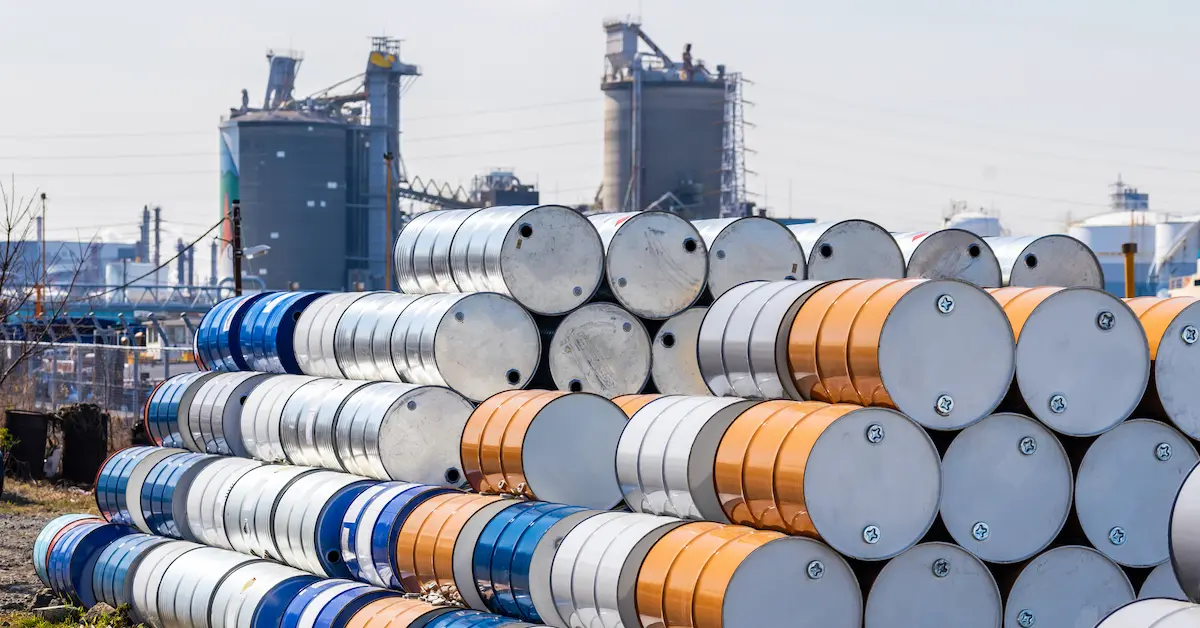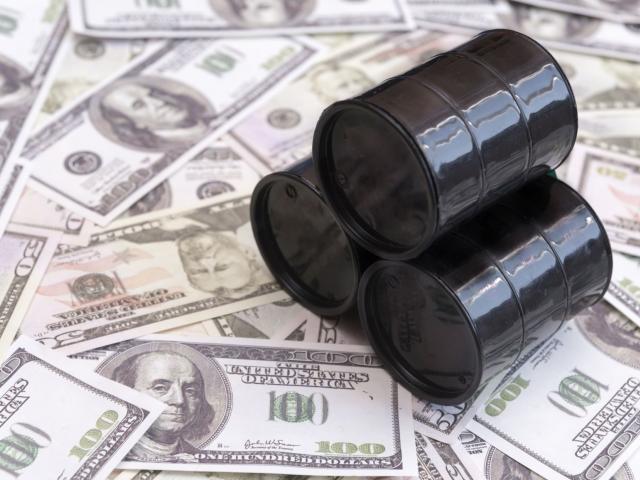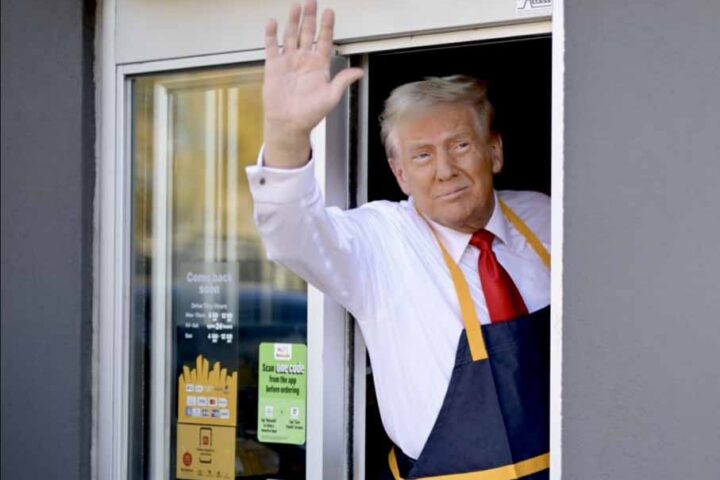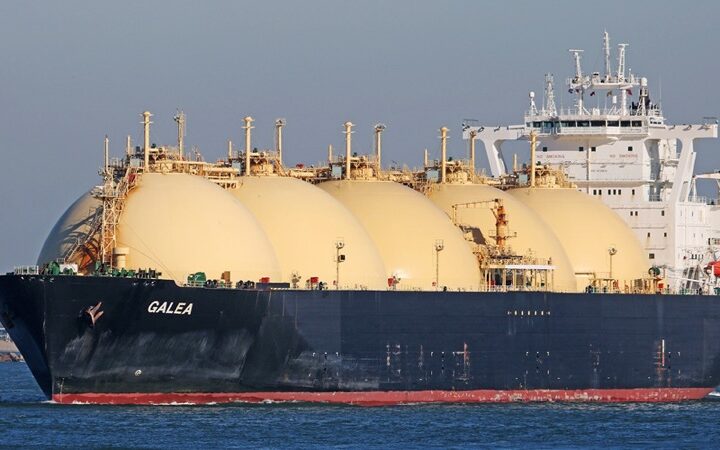Donald Trump may seem to have backed down on his tariff wars on other countries, but with markets and tariffs the only certainty is uncertainty.
It is very difficult to predict the US president’s moves and their consequences. That is what puts the markets into a tailspin
Crude output up, prices fall
Prior to the announcement of the new tariffs, Brent was hovering at $75/b. The increase in tariffs and the unexpected production hike by OPEC+ dragged the benchmark crude to less than $60/b at one stage.
Following the 90-day tariff pause, it bounced and settled at $64/b – still, a 15% drop. Brent advanced from $64.50 posted on Monday, and was trading on Tuesday at $64.75.
The other crude oil benchmark, West Texas Intermediate, advanced on Tuesday, trading at $61.28 per barrel, up from Monday’s close of $61.13.
Eight of the OPEC+ countries unexpectedly agreed on April 3 to advance their plan to phase out oil output cuts by increasing production by 411,000 barrels a day in May, instead of the widely expected hike of 135,000 b/d, a decision that prompted oil prices to extend earlier sharp losses.
OPEC+ cited “continuing healthy market fundamentals and the positive market outlook” as one of the reasons. Compensation for possible drops in production by Venezuela and Iran due to renewed pressure from the US, was another.
However, OPEC+ also said that “the gradual increases may be paused or reversed subject to evolving market conditions”.
Woodmac estimates that if Trump’s initial tariffs remain, a lower global GDP growth could reduce oil demand for 2026 by about 1 million b/d and prices in 2026 by $7/b. That would mean Brent averaging $64/b throughout 2026.
This would impact investment and new upstream projects in 2026, and oil production by 2030.
The US Energy Information Administration (EIA) expects these developments in global trade policy and oil production to contribute to lower global demand growth for petroleum products throughout 2026, which will contribute to significantly lower oil prices than previously forecast, with Brent at $68/b in 2025 and $61/b in 2026.
With WTI at less than $60/b, many US shale oil producers will struggle to turn a profit, especially in some of the country’s ageing basins, forcing them to potentially stop drilling.
And if it goes below $50/b, it will bring back mass bankruptcies.
Gas demand to continue growth
The gas price at the Title Transfer Facility (TTF), Europe’s biggest gas benchmark, fell 22% from €42.8/MWh before the tariffs announcement to €33.4/MWh.
The International Energy Agency (IEA) warned that growth in the world’s natural gas demand is set to slow in 2025. The global gas balance is still fragile, with supply remaining tight and geopolitical uncertainties continue to fuel price volatility.
Speculation that the Nord Stream pipelines could be reactivated if Russia and Ukraine reach a peace deal keeps coming back, often driven by American interests.
Earlier this year, the Swiss court handling the insolvency of pipeline owner Nord Stream 2 AG, postponed the company’s foreclosure proceedings to May, stating that the incoming Trump administration and the change of government in Berlin could have “significant effects” on the economic value of the pipeline company.
Europe rethinks US natgas supplies
The EU approved the first wave of retaliatory measures against Trump’s tariffs. It is targeting American products, such as soybeans, steel, copper and motorcycles, with a counter-tariff of up to 25%.
It then decided to suspend further tariffs for 90 days, announcing that it is prepared to negotiate.
An option is to buy more US LNG, “if it fits with its green goals”, but since LNG trading is conducted by companies, prices need to be competitive. In any case, the EU already buys 45% of its LNG imports from the US, limiting how much more it can buy.
Trump has already said that the EU must buy $350 bln of US energy to get tariff reliefs.
But Commission President Ursula von der Leyen warned that if negotiations with the US fail, the EU is prepared to tax the big US tech companies, such as Meta and Google.
The EU view appears to be: “Time is somewhat on our side. We’ve got to actually take this step by step. And that’s what we’re going to do.”
It has also developed an economic-security toolbox designed to deter third counties from “coercing” it.
Trump agrees with Greece’s PM Kyriakos Mitsotakis that there is potential for a “win-win” trade deal between the EU and the US. Italy’s Giorgia Meloni is on the way to Washington to discuss options this week.
Europe does not necessarily have to choose between America and China. It must establish its own position in the developing multi-polar world.
Meanwhile, in Germany, industrial production continues to fall. It fell by 1.3% in February, a steeper decline than expected. The drop was mainly driven by weakness in construction, food production, and the energy sector.
European industry is suffering from: 1) too high energy costs; 2) too high labor costs; 3) too much bureaucracy.
The EU’s conflicting gas signals jeopardise supply security. Despite earlier resistance to long-term gas contracts, the EU is now signaling a return to such agreements to secure energy supply. In doing so, enforcing the new methane regulation may prove impractical.
As Europe reembraces long-term gas deals, US LNG producers look safe. While the EU’s new methane rules demand cleaner cargo, enforcement challenges and high LNG demand mean that security will trump policy.
US victim of own-goal
Donald Trump paused his punitive tariffs for 90-days only after the market for US Treasury bonds started plummeting and America’s financial system suddenly looked very shaky, coming close to the brink. Rising bond yields and a falling US dollar were too alarming for Trump to ignore.
Despite this, the base 10% tariff, and the previously announced steel/aluminium and auto levies are still in place. But these are likely to be treated as ceilings, with the only direction being to move down.
However, the massive 145% tariffs on China remain. China retaliated by raising tariffs on US goods to 125%. With this level of tariffs, the US and China are effectively placing a trade embargo on each other. It remains to be seen what the EU’s position will be.
In addition, the worsening US-China trade war keeps markets unsettled, concerned that it will impact global economic growth.
Trump believes China has no allies in the developing trade war and will be looking to pick some up during the next 90 days.
One of the aims of the new US tariffs is to bring back work and keep jobs in the US, but plants take years to build and many are unlikely to be finished before his second term expires.
As long as the tariff chaos and the uncertainties persist, it is too risky to build new plants.
Countries seeking to cut a deal with Trump will try to purchase more crude, LNG and coal. That can help reduce their trade surplus.
Energy and energy product imports are exempt from Trump’s sweeping tariffs which are already are hurting Texas oil companies that have supported him strongly.
There are probably few industries feeling more aggrieved right now with the tariffs war than US shale oil.
The oil price plunge puts US shale production in peril. The trade war and OEC output surge have created the toughest challenge since the Covid-19 pandemic, with the crude oil price now below break-even.
JPMorgan Chase CEO Jamie Dimon warned that recession is now ‘a likely outcome’ for the US economy. Asked if he’s personally expecting a recession, he said “I think probably that’s a likely outcome.”
Goldman now forecasts only 0.5% US economic growth in 2025 and still sees a 45% chance of recession within the next year.
The scale of US levies on Chinese goods is deepening recession fears, with dollar and Treasuries sell-off increasing.
Trump’s new tariffs could push more countries to ditch the US dollar. The USD’s strength and leading reserve currency role offer substantial benefits to the US. High demand reduces borrowing costs and ensures the US can run larger trade.
The FT’s Martin Wolf said Trump’s tariffs will damage the world. The trade deficits will remain roughly unchanged because imports will shrink, but so will exports. The deficits, determined by income and spending, will remain roughly unchanged, but the globe will just end up poorer.
This is becoming the end of an era heralding a permanent reorientation in global relationships with a US no longer seen as a reliable ally.
Former Treasury Secretary Janet Yellen’s view: “This is the worst self-inflicted wound that I’ve ever seen an administration impose on a well-functioning economy.”
China ready for a long war
China will not be buying any more US crude or LNG with the new tariffs.
China helped spark Trump’s tariff war – China’s domination of global trade, and its huge trade surplus that reached close to $1 trln in 2024, is what has led to a schism between the world’s two largest economies and left many others worried about their industries being crushed by China’s export machine.
Beijing has vowed to ‘fight to the end’ after Trump’s additional higher tariffs. So far, neither side appears willing to back down. China said it will “resolutely take countermeasures to safeguard its own rights and interests”.
Chinese leaders actually expect that the Trump administration’s policies will dismantle the foundations of US global hegemony and create an opportunity for Beijing to expand its influence farther and faster.
Dr Charles Ellinas, Councilor, Atlantic Council
X: @CharlesEllinas










